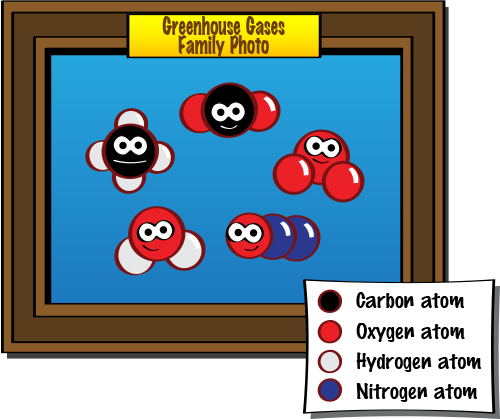How do we keep the right balance of greenhouse gases in our atmosphere?
Greenhouse Gases
Besides CO2 there are other greenhouse gases. These include water vapor, methane, nitrous oxide, and ozone. Without any greenhouse gases, Earth would be an icy wasteland. Greenhouse gases keep our planet livable by holding onto some of Earth’s heat energy so that it doesn’t all escape into space. This heat trapping is known as the greenhouse effect.

Just as too little greenhouse gas makes Earth too cold, too much greenhouse gas makes Earth too warm. Over the last century, humans have burned coal, oil, and gasoline in our cars, trucks, planes, trains, power plants, and factories. Burning such fossil fuels produces CO2 as a waste product. Putting so much new CO2 into the air has made Earth warmer. If we continue on our current path, we will cause even more warming.

Finding a Balance
CO2 is a big part of the carbon cycle. The carbon cycle traces carbon's path from the atmosphere, into living organisms, then turning into dead organic matter, going into the oceans, and back into the atmosphere. Scientists describe the cycle in terms of sources (parts of the cycle that add carbon to the atmosphere) and sinks (parts of the cycle that remove carbon from the atmosphere).

The key to keeping everything in balance is for the sources and sinks to have the same amount of CO2.
The most important sinks are the ocean (which includes the seawater itself, the organisms living there, and the sediments on the sea floor) as well as plants and soil on land. The ocean stores most of the world's carbon, but forests are really important too. Forests and oceans each remove around one-fourth of the carbon we humans have added to the atmosphere.















